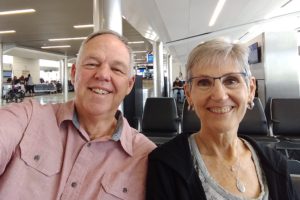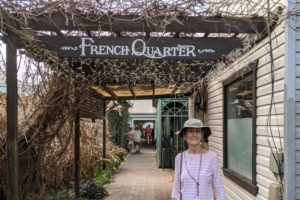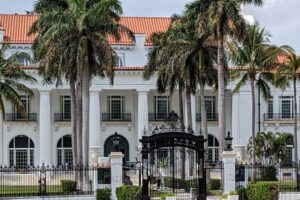The museum on Mesa Top was a real highlight of our visit to Mesa Verde National Park since it gave us such an in-depth look at those who had lived in this area. If nothing else, the historical buildings were so intriguing.


The building style is Modified Pueblo Revival that blends into its environment. The details of the buildings’ outside and inside show the talent of the CCC workers who built them and the detailed dioramas we’ll see next.
other buildings



dioramas built in the 1930s
A series of historical dioramas were built by the CCC in the 1930s.

All of the scenes were based on real-life locations, and each site was thoroughly researched and replicated. They first made sketches and then constructed small scale replicas

Every detail was crafted by hand, usually by trial and error since they didn’t have how-to manuals. Materials had to be figured out as they went along. For example, when making the baskets, fabric was pressed into damp paper-mache to make a woven impression, and then the miniatures were painted. For forming the alcoves and other landscape features, newspaper was soaked for several weeks in vats of water, put through a meat grinder, and then mixed with plaster of Paris.

When the dioramas were first completed in 1939, they easily became one of the most popular exhibits in the museum. During the peak season, the glass quickly became smudged with finger and nose prints and had to be cleaned every few hours. People have been drawn to the every-day life of the Pueblo people for years. The rangers know that this display is still popular, because the glass still has to be cleaned frequently.
Basketmaker Period
I’m going to skip the first couple of dioramas because they cover time periods not seen at Mesa Verde. However, we do need to talk about the Basketmaker Period since it sets the scene for Mesa Verde area.
In the Basketmaker Period, the people would use the alcoves for sleeping and shelter and started farming on top of the mesa. Weaving yucca fiber (more later on) helped them make bags, sandals, and baskets. Clothing came from small animals. Jewelry was made from stones, sea shells, bones, seeds, and turquoise—showing their nomadic background. They hunted with a throwing stick tipped with a stone point.
But here are the dioramas that do cover our time here.
A.D. 555 – 750 – modified basketmaker period



During this period they learned how to make pottery from people living further south, fashioning water jars, bowls, pitchers, ladles, and cooking pots. Meals could be more nourishing and appetizing by using this pottery since they could now cook over fire. The bow and arrow replaced the throwing stick.
A.D 750 – 1100 – developmental pueblo period




Water came from springs and seeps, and they built reservoirs to catch runoff from rain and snow. To improve farming, they built terraces for their crops and small dams across draws. Baskets remained common, but pottery became the dominant craft.


Carrying babies went through a big change during this time that would deform their heads. Instead of using padded cradle board, they took away the padding and used a rigid cradle that permanently flattened the backs of infants’ heads. This practice continued for a couple of centuries. What was this change was all about?
Cotton was introduced during this time because of trade with groups to the south. Trade also brought in different types of pottery and new strains of corn, helping to support a growing population.
A.D 1100 – 1300 – great or classic pueblo period

Walls were built of shaped sandstone blocks laid in mud mortar, and roofs were constructed of poles, bar, and mud. Houses were grouped around open plazas where most of the daily activities took place.


In good years, produce was stored for use in years of crop failure. Water was carried from a springs in the head of the canyon. Food was boiled in jars, baked or fired on flat stone griddles, or roasted in ashes or coals.


Next we’ll see the rest of the museum.




